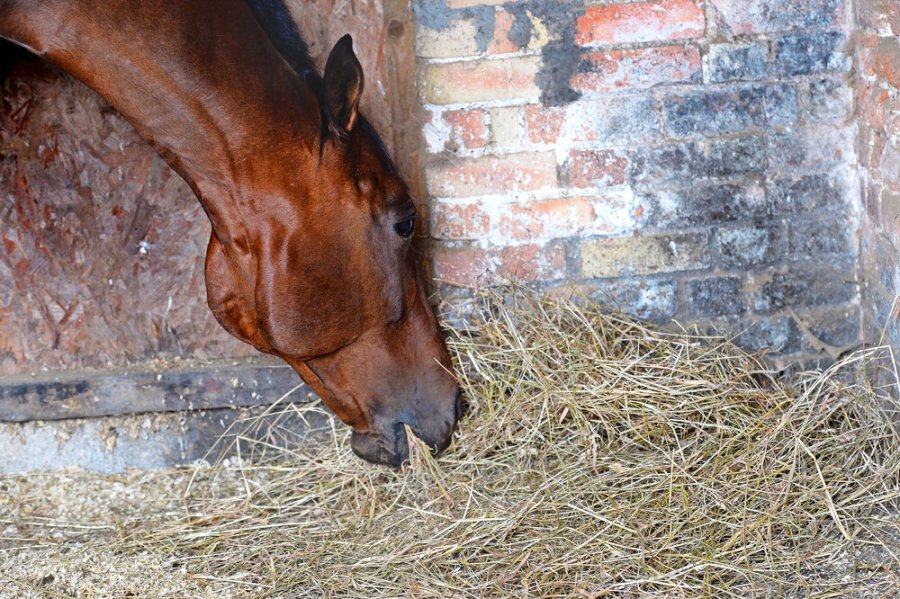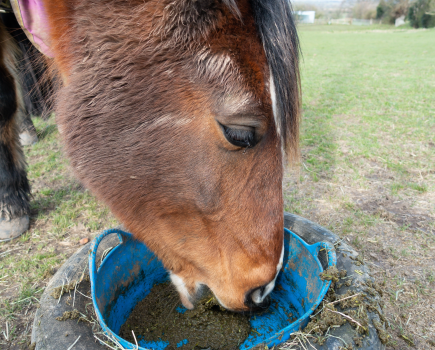Keeping condition on an older horse can be tricky, but it is essential to ensure good health. Marcus Bennett, a vet in the equine technical team at Boehringer Ingelheim Animal Health, explains how to help older horses maintain condition.
Maintaining a healthy body weight in any horse or pony can be a challenge, but it can be particularly difficult as your horse gets older.
Obesity is a major welfare concern in Britain’s equine population, but being underweight also has its own health and welfare implications.
As your horse ages he can be affected by a wide range of common diseases that can affect his ability to maintain a healthy weight.
Causes of weight loss
Weight loss can be associated with a loss of muscle and/or fat. A number of diseases can cause weight loss in older horses, including:
Equine Cushing’s disease (aka PPID; pituitary pars intermedia dysfunction)
This is a common disease that affects horses and ponies over the age of 10 and it’s estimated that 20% of horses over 15 in the UK are affected1.
While the ‘typical’ equine Cushing’s patient is overweight, this isn’t always the case.
The disease can cause muscle wastage — usually seen as loss of topline over the back or a pot- bellied appearance — and abnormal fat distribution, often seen as bulging above the eyes or behind the shoulders.
Internal parasitism
Parasites are an issue in horses of any age, but in older animals they can deprive a horse of vital nutrients. It is worth noting that if a horse has unmanaged Cushing’s disease, they will be pre-disposed to parasitism.
Dental disease
Both gum disease and loose, missing or fractured teeth can cause weight loss in older horses. Weight loss can come on suddenly and is usually due to a reduction in feed intake caused by pain or selective feeding.
Muscle or joint pain
Any condition causing pain can lead to reduced movement and grazing and therefore a lower feed intake.
Equine asthma (formerly called IAD/RAO/COPD/heaves)
If this condition is severe and left untreated it will prove to be a significant drain on a horse’s energy and, over time, it can cause weight loss.
A sign that something’s wrong
Planned and managed weight loss in a horse with too much fat isn’t a problem. However, unintended weight loss is a sign that something is wrong.
It could be as simple as an increase in workload and no corresponding increase in diet, or it could be indicative of an underlying disease.
It is important to understand that weight loss isn’t inevitable as horses age, and that the sooner the underlying problem is identified, the sooner it can be addressed.
Remember that because horses are prey animals they will try to hide any pain they are feeling. This means that weight loss can be the first visible sign of painful conditions, such as dental disease.
Spotting changes
Older horses especially can lose or gain weight over a longer period of time, so it may not be immediately apparent to you that this is happening.
That’s why it’s good practice to regularly assess your horse so that you can pick up any changes promptly.
This will allow your vet to check for underlying medical causes, and for you to adjust your horse’s feed and exercise regime accordingly.
You can use several methods to assess your horse’s weight and fat cover:
- Weighing scales
- Weightapes
- Body Condition Score (BCS)
- Body Fat Score (BFS)
Weigh scales are useful for calibrating your horse’s BFS/BCS with his overall weight, but scales and weighbridges can be hard to access and don’t differentiate between loss/gain of muscle or fat.
Weightapes are a quick and simple method to estimate your horse’s weight and are useful to track upward or downward weight trends.
However, this measurement won’t tell you whether your horse has put on or lost muscle or fat, and the actual values are only estimates.
BCS and BFS are methods of measuring the fat cover over different parts of your horse’s body. Traditionally BCS is given as an overall score, which can be confusing if your horse is losing muscle or fat from a specific area of his body.
The term ‘condition’ can also be confusing as it is often used to refer to the horse’s coat and his general health.
BCS may not always be appropriate for older horses who have muscle wastage or abnormal fat distribution (unlike younger horses who tend to put on weight more evenly).
BFS is a more recent and more specific term used to measure fat cover in your horse. It’s usually scored over the neck, middle and bottom so that you can track any changes in muscle and fat in these areas.
Dr Teresa Hollands, nutritionist at the University of Surrey, has put together some helpful video guides on how to perform BFS, as well as how to use a weightape. You can find them at careaboutcushings.co.uk.
Your next move
As with most conditions, if you are concerned about your horse’s weight loss, call your vet. They will be able to examine him and advise you on the next steps towards investigating the cause of the change.
Keeping up to date with preventative healthcare is also vitally important. Routine vaccinations, parasite control and dental examinations will all help to prevent weight loss due to some common conditions.









